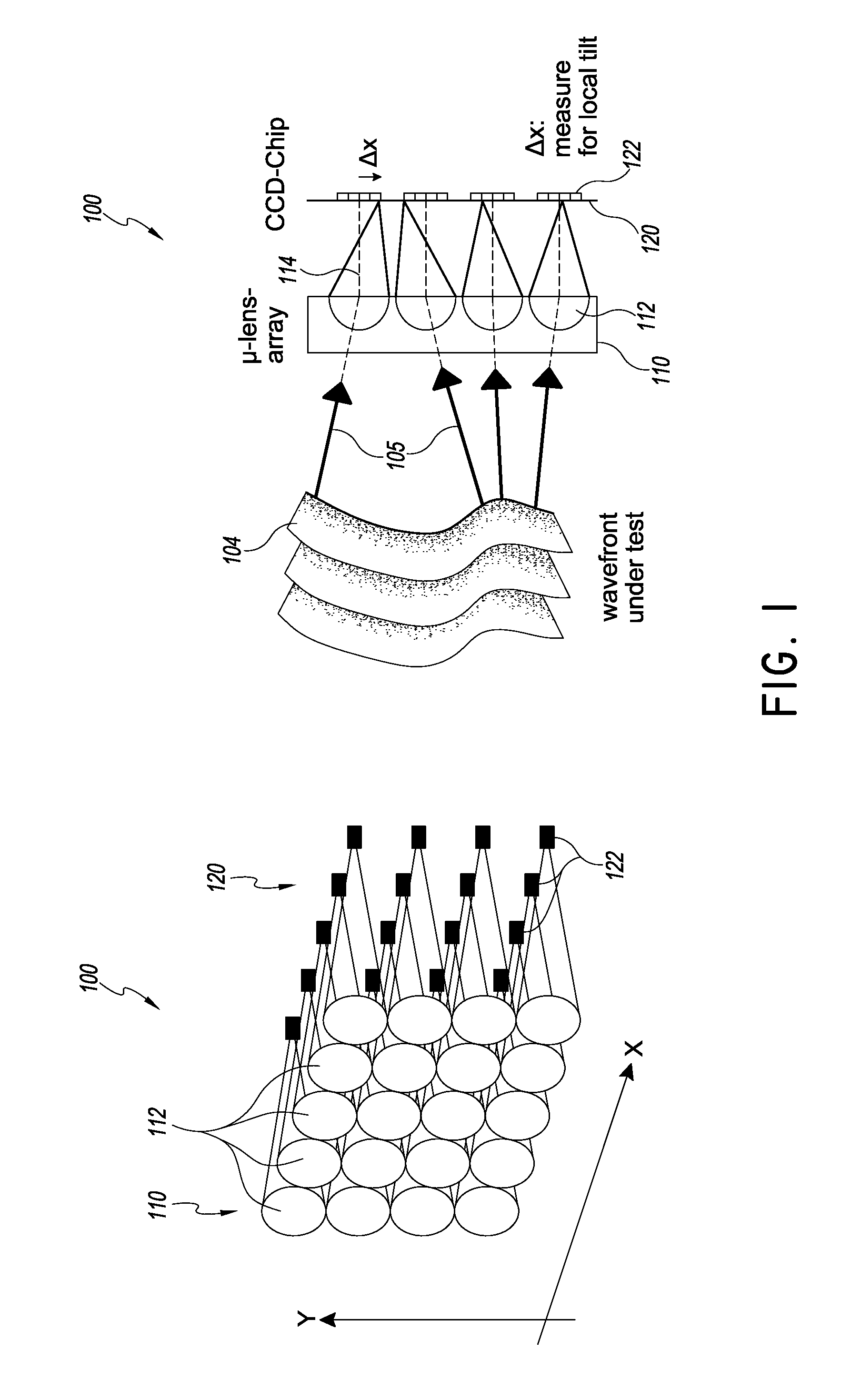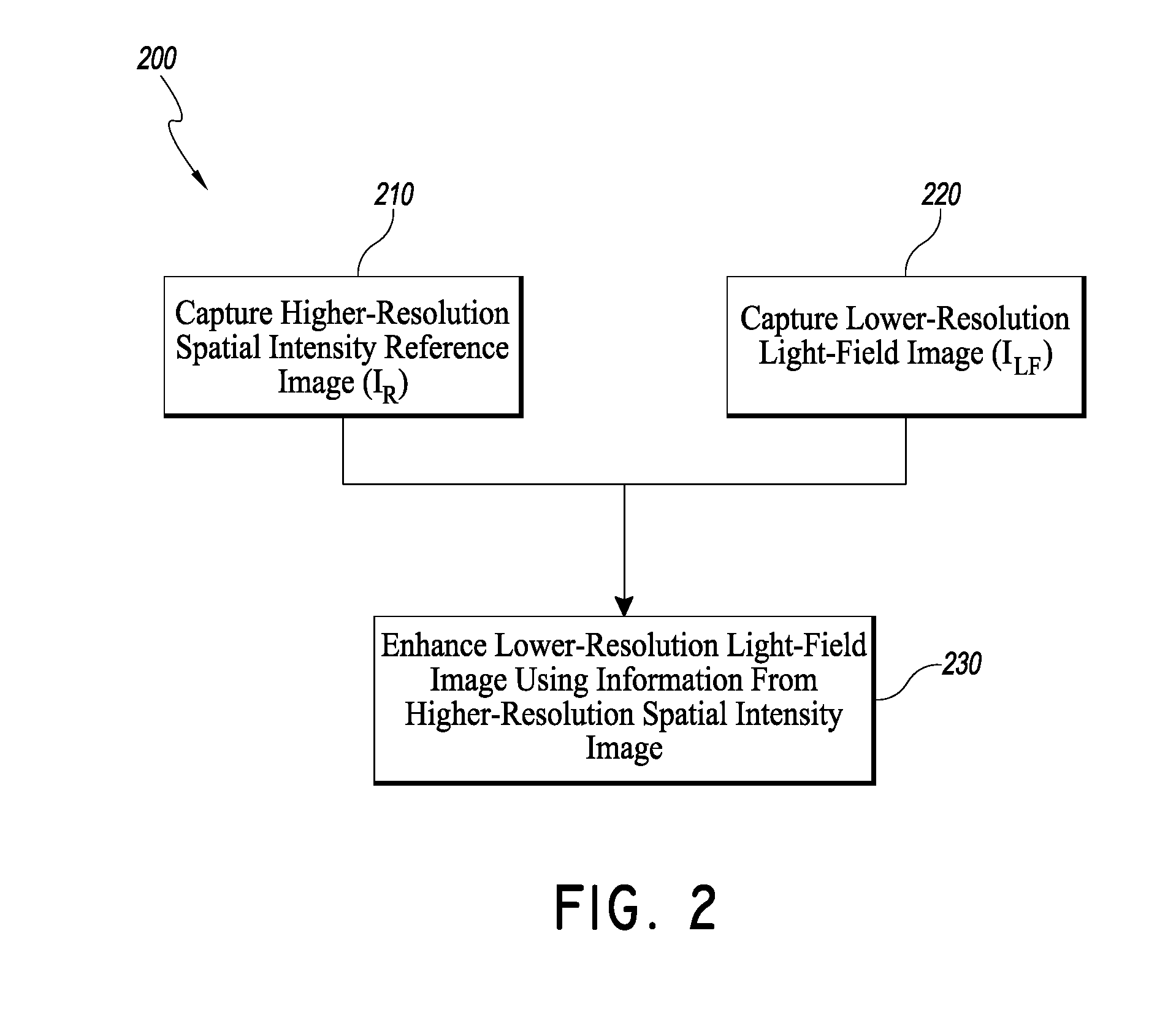Resolution light-field imaging
a light-field imaging and resolution technology, applied in the field of light-field imaging and light-field image processing, can solve the problems of limiting the information content of the image, ambiguity in depth, and inability to quantitatively determine the depth and certain light statistics of conventional images, so as to enhance the resolution of light-field images.
- Summary
- Abstract
- Description
- Claims
- Application Information
AI Technical Summary
Benefits of technology
Problems solved by technology
Method used
Image
Examples
Embodiment Construction
[0024]The following disclosure includes various embodiments of devices and methods for enhancing the resolution of light-field images. A light-field image can be obtained using a wavefront sensor (e.g., a Shack-Hartmann array of lenslets) and generally includes a set of information that identifies the intensity of each of multiple light rays that are incident upon a particular location in an image plane at different angles. A light-field image may be four-dimensional in that it typically contains information about four different variables: x and y, which identify a particular spatial location in a two-dimensional image plane; and, kx and ky (or θx and θy), which identify the intensity of light arriving at the corresponding (x, y) location from different directions. In a light-field image, pixels are devoted to recording information distributed over space and the angles of propagation of the light. A light-field image can be contrasted with a conventional spatial intensity image (gen...
PUM
 Login to View More
Login to View More Abstract
Description
Claims
Application Information
 Login to View More
Login to View More - R&D
- Intellectual Property
- Life Sciences
- Materials
- Tech Scout
- Unparalleled Data Quality
- Higher Quality Content
- 60% Fewer Hallucinations
Browse by: Latest US Patents, China's latest patents, Technical Efficacy Thesaurus, Application Domain, Technology Topic, Popular Technical Reports.
© 2025 PatSnap. All rights reserved.Legal|Privacy policy|Modern Slavery Act Transparency Statement|Sitemap|About US| Contact US: help@patsnap.com



